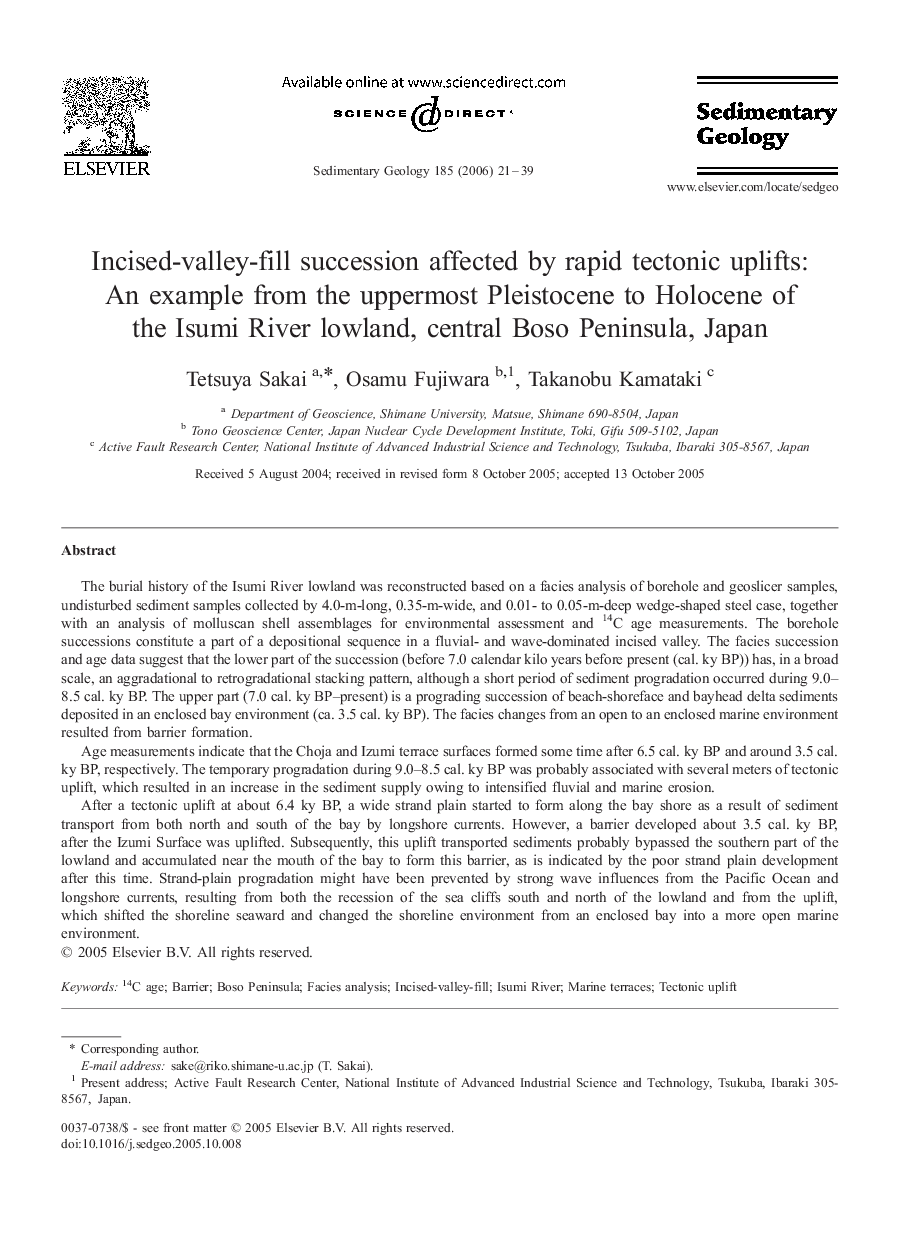| کد مقاله | کد نشریه | سال انتشار | مقاله انگلیسی | نسخه تمام متن |
|---|---|---|---|---|
| 4691109 | 1636190 | 2006 | 19 صفحه PDF | دانلود رایگان |

The burial history of the Isumi River lowland was reconstructed based on a facies analysis of borehole and geoslicer samples, undisturbed sediment samples collected by 4.0-m-long, 0.35-m-wide, and 0.01- to 0.05-m-deep wedge-shaped steel case, together with an analysis of molluscan shell assemblages for environmental assessment and 14C age measurements. The borehole successions constitute a part of a depositional sequence in a fluvial- and wave-dominated incised valley. The facies succession and age data suggest that the lower part of the succession (before 7.0 calendar kilo years before present (cal. ky BP)) has, in a broad scale, an aggradational to retrogradational stacking pattern, although a short period of sediment progradation occurred during 9.0–8.5 cal. ky BP. The upper part (7.0 cal. ky BP–present) is a prograding succession of beach-shoreface and bayhead delta sediments deposited in an enclosed bay environment (ca. 3.5 cal. ky BP). The facies changes from an open to an enclosed marine environment resulted from barrier formation.Age measurements indicate that the Choja and Izumi terrace surfaces formed some time after 6.5 cal. ky BP and around 3.5 cal. ky BP, respectively. The temporary progradation during 9.0–8.5 cal. ky BP was probably associated with several meters of tectonic uplift, which resulted in an increase in the sediment supply owing to intensified fluvial and marine erosion.After a tectonic uplift at about 6.4 ky BP, a wide strand plain started to form along the bay shore as a result of sediment transport from both north and south of the bay by longshore currents. However, a barrier developed about 3.5 cal. ky BP, after the Izumi Surface was uplifted. Subsequently, this uplift transported sediments probably bypassed the southern part of the lowland and accumulated near the mouth of the bay to form this barrier, as is indicated by the poor strand plain development after this time. Strand-plain progradation might have been prevented by strong wave influences from the Pacific Ocean and longshore currents, resulting from both the recession of the sea cliffs south and north of the lowland and from the uplift, which shifted the shoreline seaward and changed the shoreline environment from an enclosed bay into a more open marine environment.
Journal: Sedimentary Geology - Volume 185, Issues 1–2, 1 March 2006, Pages 21–39